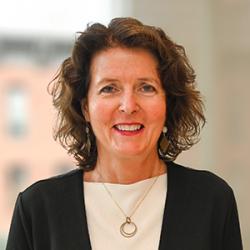A few years ago, I was working as an attending physician on the inpatient floor of Barnes-Jewish Hospital in St. Louis, Missouri. Barnes-Jewish is the teaching hospital for Washington University School of Medicine in St. Louis, and it’s a wonderful hospital, with highly competent and compassionate doctors, nurses, and other health care professionals.
But treating patients there was hard and often demoralizing, for the patients and for us. That’s because despite all of the tools at our disposal — the latest technology, the best medicines, a compassionate and caring staff — many patients just weren’t getting better. They would come in to see us and we would fix their immediate problem, but because of their social circumstances or where they lived or worked or limitations in their access to healthy food or affordable medications, they kept returning again and again.
I remember one patient, a 50-year-old woman with Type 2 diabetes who kept being readmitted to the hospital because her sugars were too high. She knew and we knew that a healthy diet and regular exercise would help her better control her blood sugar and reduce the amount of medication she needed. But she lived in a part of the city that was plagued by gun violence. Furthermore, she had no local grocery stores and got most of her food from a nearby 7-Eleven. She also worked two jobs, so she had no time to cook, shop for healthier foods, or exercise.
Those were the circumstances of her life, and they negatively affected the course of her disease.
As a physician, when your patients keep coming back to the hospital again and again, it can be frustrating. But understanding why they keep coming back … can make you a better doctor.
I remember another patient, a man in his 60s with congestive heart failure, who often failed to show up for his regular appointments. When he got too sick, he would come to the emergency room. Turns out that this patient lived independently but had no car, so he would have to take three buses to get to the clinic. He had severe arthritis, so his mobility was even further limited. He often cut back on his medications, thinking that if he just took half his dose, he might be able to stretch out the interval between clinic visits. When he shared this information, it allowed the social worker to better connect him with community resources and help him make his appointments.
As a physician, when your patients keep coming back to the hospital again and again, it can be frustrating. But understanding why they keep coming back — the social determinants that cause them to miss appointments or cut their medications in half or struggle to eat better and exercise more — can make you a better doctor.
On Sept. 12, Stanley Goldfarb, MD, former associate dean of curriculum at the Perelman School of Medicine at the University of Pennsylvania, wrote an opinion piece for the Wall Street Journal lamenting medical schools’ incorporation of “social justice” issues in medical education. Goldfarb stated, incorrectly, that medical schools teach about social inequities, gun violence, climate change, and bias at the expense of rigorous scientific knowledge about the underpinnings and treatment of disease.
This is just not true. I have had the privilege of visiting medical schools and talking with medical educators around the country. Our educators are teaching the foundational sciences, they are teaching the social determinants of health, they are teaching how to communicate with diverse patients. They are doing all of this well, and they continually strive to do it all better.
A more diverse and culturally responsive physician workforce, and an understanding of the behavioral, psychological, and social determinants of health, are critically important to educating not only good but great physicians.
As medical educators, our responsibility is to teach future physicians to provide the best possible care for their patients and to improve the health of all. This means making sure they have the medical and scientific knowledge they need, as well as an understanding of environmental and social factors that affect a patient’s health. To suggest that medical education cannot or should not do both creates a false dichotomy.
Medical education has advanced to keep pace with rapid developments in medicine and science. We also know our patients’ health is inextricably linked to their environments, their communities, and the social fabrics of their lives. A more diverse and culturally responsive physician workforce, and an understanding of the behavioral, psychological, and social determinants of health, are critically important to educating not only good but great physicians.
So, too, is the ability of doctors to listen to, and communicate with, their patients. As new doctors avow in the Hippocratic Oath, “I will remember that there is an art to medicine as well as science, and that warmth, sympathy, and understanding may outweigh the surgeon’s knife or the chemist’s drug.”
Our profession is grounded in the human interaction between doctor and patient. The next generation of physicians must have not just the comprehensive skills and knowledge needed to care for their patients, but the ability to understand and empathize with them. Our patients deserve this, our learners want this, and our educators are working hard to meet these needs.

